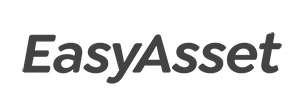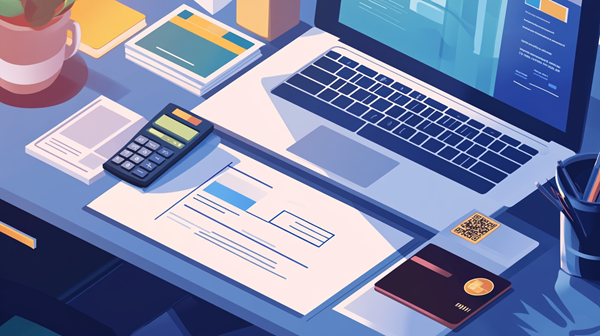Ensure your Australian business is covered with the best equipment insurance policies. Learn about theft, mobile plant, and breakdown coverage options
Key Takeaways
- Equipment insurance is essential for protecting your assets from damage, theft, and liability. In Australia, equipment theft costs businesses over $100 million annually.
- Common policies include Property Insurance, Public Liability, Business Interruption, Breakdown Cover, and Specialised Equipment Insurance.
- Costs vary based on coverage, industry, and equipment type. Expect premiums to range from $500 to $10,000+ per year.
- Certain policies are mandatory for businesses using leased or financed equipment.
- Bundling policies can reduce premiums by 10-20%, offering cost savings without compromising coverage.
- Underinsurance is a major risk, with 70% of small businesses not carrying enough coverage (Insurance Council of Australia).
Introduction
Whether you're running a construction business, a medical practice, or a manufacturing operation, your equipment is one of your most valuable assets. The right insurance policy can safeguard your investment against unexpected events such as breakdowns, theft, or natural disasters. But with so many options available, how do you choose the right coverage for your business?
This guide breaks down the different types of equipment insurance in Australia, their costs, benefits, and key considerations to help you make an informed decision.
Types of Equipment Insurance Policies
1. Property and Asset Insurance
Protects your equipment against fire, theft, vandalism, and natural disasters.
- Best for: General business equipment, construction machinery, and office assets.
- Typical coverage: Replacement cost or actual cash value.
- Estimated costs: $1,000–$5,000 per year depending on equipment value and location.
2. Public Liability Insurance (Including Equipment Cover)
If your equipment causes injury or property damage to a third party, this policy covers legal and compensation costs.
- Best for: Businesses operating in public spaces or high-risk industries.
- Typical coverage: $5 million to $20 million.
- Estimated costs: $500–$2,500 per year.
3. Business Interruption Insurance
Covers lost income if your equipment failure disrupts operations.
- Best for: Businesses heavily reliant on specialised equipment (e.g., medical, manufacturing, construction).
- Typical coverage: Lost revenue, fixed costs, temporary relocation.
- Estimated costs: $1,500–$10,000 per year, depending on revenue.
4. Equipment Breakdown Insurance
Specifically covers mechanical failures and electrical malfunctions.
- Best for: Businesses using high-tech, mission-critical machinery.
- Typical coverage: Repair costs, replacement costs, loss of income.
- Estimated costs: $750–$5,000 per year.
5. Specialised Equipment Insurance
Covers industry-specific machinery such as medical, mining, or agricultural equipment.
- Best for: Industries with high-value or unique equipment.
- Typical coverage: Accidental damage, breakdowns, theft.
- Estimated costs: Highly variable ($1,500–$15,000 per year).
6. Equipment Theft Insurance
Designed to cover losses from theft or vandalism, especially in high-risk industries like construction or mining.
- Best for: Businesses with high-value or easily portable equipment (e.g., construction machinery, tools).
- Typical coverage: Replacement costs, repair costs, or compensation for stolen items.
- Estimated costs: Varies depending on equipment value and location, typically ranging from $500–$3,000 annually.
7. Mobile Plant and Equipment Insurance
This policy is tailored to cover mobile machinery and equipment that is regularly moved from site to site, such as cranes, forklifts, and diggers.
- Best for: Construction, mining, and agricultural businesses.
- Typical coverage: Accidental damage, breakdown, and theft.
- Estimated costs: $1,500–$7,000 annually, depending on machinery type and usage.
Key Factors Affecting Equipment Insurance Costs
1. Type and Value of Equipment
- Higher-value or specialist equipment = higher premiums.
- Example: Insuring a medical imaging machine can cost $5,000+ per year, while basic office equipment may cost $500–$1,000.
2. Industry and Usage
- High-risk industries (construction, mining) face higher premiums.
- Stationary office equipment costs less to insure than mobile equipment used on multiple sites.
3. Security Measures in Place
- Enhanced security (CCTV, GPS tracking, secured premises) can reduce premiums by up to 15%.
4. Policy Excess & Coverage Limits
- Higher excess = lower premiums but higher out-of-pocket costs in claims.
- Comprehensive policies cost more but provide broader protection.
How to Choose the Right Policy
1. Assess Your Business Needs
- Identify the key risks your business faces.
- Determine which equipment is essential for daily operations.
2. Compare Multiple Providers
- Don’t settle for the first quote—compare at least three insurers.
- Consider both premium costs and coverage scope.
3. Check for Policy Exclusions
- Not all policies cover wear and tear, gradual deterioration, or unapproved modifications.
- Review exclusions carefully to avoid surprises.
4. Consider Bundling Policies
- Many insurers offer discounts if you bundle public liability, business property, and equipment breakdown insurance.
5. Review Annually & Update as Needed
- As your business grows, your insurance needs will change.
- Regular reviews ensure you remain adequately covered.
Common Mistakes to Avoid
1. Underinsuring Your Equipment
- 70% of small businesses in Australia are underinsured—don’t be one of them.
2. Ignoring Business Interruption Insurance
- Equipment failure can bring operations to a halt—loss of revenue protection is crucial.
3. Not Checking Claim Processes
- A low premium isn’t worth it if the claims process is slow or difficult.
FAQs
Q: Is equipment insurance tax-deductible in Australia?
Yes, premiums for business insurance policies are tax-deductible under Australian Tax Office (ATO) guidelines.
Q: Do I need insurance if my equipment is leased or financed?
Most finance agreements require insurance coverage. Check your contract to ensure compliance.
Q: How do I lower my equipment insurance costs?
Implement security measures, choose higher excess amounts, and bundle policies to save up to 20%.
Q: Does equipment insurance cover accidental damage?
Not always. Some policies include accidental damage, while others require add-ons. Check the fine print.
Q: How quickly can I get a payout if I make a claim?
It varies. Some insurers process claims within 7–14 days, while complex cases can take longer.
Q: Can I insure second-hand or pre-owned equipment?
Yes, you can insure second-hand equipment, but it may be subject to different terms or premiums. Insurers may adjust the value based on the age and condition of the equipment, and in some cases, they may require a professional assessment before coverage is approved.
Conclusion
Choosing the right equipment insurance policy ensures your business is protected from unexpected financial losses. Whether you need coverage for theft, breakdowns, or liability, there’s a policy suited to your needs. Regularly review your coverage, compare providers, and take advantage of bundling discounts to optimise your protection while keeping costs manageable.
By investing in the right insurance today, you safeguard your business against potential disruptions and financial setbacks in the future. Is your equipment adequately insured? Now’s the time to find out.


